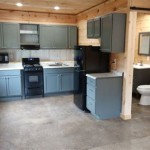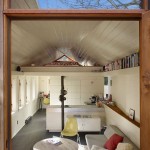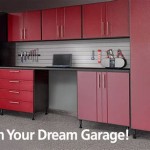Creating a Functional and Stylish Garage Workbench With Drawers
A garage workbench stands as a central element for various projects, from home repairs and automotive maintenance to woodworking and crafting. A well-designed workbench not only provides a sturdy surface for undertaking these tasks but also incorporates storage solutions to maintain organization and efficiency. Integrating drawers into the design elevates the functionality of the workbench, offering dedicated spaces for tools, hardware, and project components. This article will detail the considerations and steps involved in creating a functional and stylish garage workbench with drawers.
The design of a garage workbench should prioritize both utility and aesthetics. While the primary function revolves around providing a durable and stable workspace, a visually appealing design can enhance the overall garage environment. Balancing these two aspects requires careful planning and consideration of materials, dimensions, and organizational features.
Key Point 1: Planning and Design Considerations
Before embarking on the construction process, a thorough planning phase is crucial. This stage involves defining the workbench's intended use, determining the available space within the garage, and selecting appropriate materials. The design should reflect the specific needs of the user and the limitations of the surrounding environment.
Defining Workbench Usage: The types of projects anticipated for the workbench will significantly influence its design. For example, a workbench intended for heavy-duty tasks, such as automotive repairs, will necessitate a more robust construction compared to one designed primarily for light crafting. The size and type of tools that will be used and stored on the workbench should also be considered.
Assessing Available Space: Measuring the available space in the garage is essential to determine the maximum dimensions of the workbench. Consider the amount of room needed to comfortably work around the bench and access other areas of the garage. The placement of the workbench should also take into account the location of power outlets and lighting fixtures.
Material Selection: The choice of materials will impact the workbench's durability, stability, and overall appearance. Common materials include wood (such as plywood, solid lumber, and butcher block), metal (typically steel), and composite materials. Wood offers a good balance of affordability, workability, and aesthetics, while metal provides superior strength and durability. The workbench top should be constructed from a sturdy, thick material to withstand the weight of tools and projects.
Workbench Dimensions: The optimal height, width, and depth of the workbench will vary depending on the user's height and reach. A comfortable working height is typically around 36 to 42 inches, allowing for standing or sitting while working. The width should be adequate to accommodate common project sizes, and the depth should allow for comfortable reach across the work surface. Drawer dimensions should be carefully considered to optimize storage capacity and accessibility.
Drawer Configuration: The number, size, and arrangement of drawers will determine the workbench's storage capabilities. Consider incorporating a variety of drawer sizes to accommodate different types of tools and hardware. Deep drawers are suitable for storing larger items, while shallow drawers are ideal for small parts and accessories. Full-extension drawer slides will provide complete access to the contents of each drawer.
Key Point 2: Construction Process and Techniques
Once the design is finalized, the construction process can begin. This stage involves cutting the materials to size, assembling the frame and drawers, and finishing the workbench to protect it from wear and tear.
Frame Construction: The workbench frame provides the structural support for the entire assembly. It should be constructed from sturdy materials and assembled using strong joinery techniques. Common framing methods include using 2x4 lumber for the legs and aprons, connected with screws or bolts. Reinforcing the corners with gussets or brackets will enhance the frame's stability.
Drawer Construction: The drawers can be constructed from plywood or solid wood, using dado joints, rabbet joints, or dovetail joints for added strength. The drawer bottoms should be securely attached to the sides and fronts. Drawer slides should be installed according to the manufacturer's instructions, ensuring smooth and effortless operation. The drawer faces can be attached with screws or glue, and finished to match the overall workbench design.
Workbench Top Installation: The workbench top should be securely attached to the frame, using screws or bolts. If using a solid wood top, consider applying a sealant to prevent moisture absorption and warping. The top should be smooth and level, providing a stable and consistent work surface. Adding a vise or other work-holding devices to the top can further enhance the workbench's functionality.
Finishing and Protection: Applying a finish to the workbench will protect it from scratches, stains, and moisture. Common finishes include polyurethane, varnish, and lacquer. The finish should be applied in multiple thin coats, allowing each coat to dry completely before applying the next. For metal components, a protective coating such as paint or powder coating can prevent rust and corrosion.
Key Point 3: Enhancing Functionality and Style
Beyond the basic construction, several features can be added to enhance the workbench's functionality and aesthetic appeal. These additions can customize the workbench to meet specific needs and preferences.
Adding a Backsplash: A backsplash attached to the rear of the workbench can prevent small parts and tools from falling behind the bench. It can be constructed from plywood or solid wood and attached to the frame with screws or nails. The backsplash can also serve as a mounting point for power strips, lighting fixtures, and tool holders.
Installing a Pegboard: A pegboard mounted above the workbench provides a convenient way to organize and store frequently used tools. Pegboards are readily available in various sizes and can be easily customized with hooks, shelves, and containers. The pegboard should be securely attached to the wall or the workbench frame.
Integrating Lighting: Adequate lighting is essential for any workbench. Task lighting, such as LED strip lights or gooseneck lamps, can provide focused illumination on the work surface. Overhead lighting can also be used to illuminate the entire garage. The lighting should be positioned to minimize shadows and glare.
Adding Power Outlets: Integrating power outlets into the workbench provides convenient access to electricity for power tools and other devices. Multiple outlets should be strategically placed to accommodate various tasks. The outlets should be grounded and protected by a circuit breaker to prevent electrical hazards.
Personalizing the Design: The workbench can be personalized with various decorative elements, such as paint, stain, or hardware. Adding custom drawer pulls, decorative trim, or a personalized nameplate can enhance the workbench's visual appeal. The design should reflect the user's individual style and preferences.
Creating a functional and stylish garage workbench with drawers involves careful planning, precise construction, and thoughtful customization. By considering the intended use, available space, and material options, individuals can build a workbench that meets their specific needs and enhances their workspace. The inclusion of drawers provides valuable storage space, while additional features like backsplashes, pegboards, and lighting can further improve the workbench's functionality and aesthetic appeal. Through careful execution of these steps, building a workbench can result in a durable and attractive addition to any garage.

Garage Workbench Diy How We Ed Storage

Brilliant Ways To Organize The Garage Blue I Style Creating An Organized Pretty Happy Home

Top 8 Garage Workbench Ideas For A Functional Workspace

14 Super Simple Workbenches You Can Build The Family Handyman

Build A Basic Workbench Tylynn M

Easy Garage Storage And Bench 8 Steps With Pictures Instructables

Garage Workbench Diy How We Ed Storage

Garage Workbench Diy How We Ed Storage

Bigdug Garage Drawer Cabinet Workbench With Drawers

Brilliant Ways To Organize The Garage Blue I Style Creating An Organized Pretty Happy Home
Related Posts








